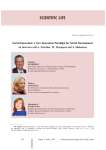Economic and Social Changes: Facts, Trends, Forecast @volnc-esc-en
Статьи журнала - Economic and Social Changes: Facts, Trends, Forecast
Все статьи: 1728
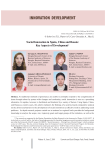
Social innovation in Spain, China and Russia: key aspects of development
Статья научная
As traditional methods of governance are unable to promptly respond to the conglomerate of issues brought about by system-wide changes and modernity, social innovation is seen as a promising alternative. Its uptake, however, is facilitated and hindered by a variety of factors. Using Spain, China, and Russia as country cases, this article explicates the findings of a systems-based comparative analysis on the drivers and barriers to the development of social innovations as effective tools in addressing social problems. In depth research projects carried out at national or regional levels provides the background knowledge to analyze the scope, size, trajectory, goals and target groups of the initiatives, as well as the geographical, historical and socio-economic frameworks and environments of the social innovations studied. It was found that there is a need to further clarify the concept of social innovation and to stimulate awareness and public support for social entrepreneurship across all three cases. Specific fiscal, legislative, and social measures are also identified for social innovation initiatives to flourish in each of the three countries analyzed. These findings provide a valuable contribution to public policy by illuminating practical ways to move forward in making social innovation an effective and sustainable strategy for addressing pertinent societal issues.
Бесплатно
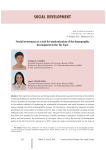
Social investment as a tool for modernization of the demographic development in the Far East
Статья научная
The experience of domestic and foreign studies demonstrates a growth of interest in the problem of rational distribution of public financial resources as social investments in human capital development, which is described in our paper with the help of demographic development parameters; this corresponds to the modern tradition of considering the relationship of economic and social dynamics in extreme regions through the prism of demographic changes. In this context, the perspective estimates of public spending on the social sphere in relation to the Far East, a region that was proclaimed a strategic priority of Russia in the 21st century, are of particular value. The goal of our study is to develop and test the tools that allow us to quantify the scale and structure of public spending on education, healthcare and social policy, and that promote the achievement of the target values set out in the concept of demographic policy of the Far East for the period up to 2025. Using the model constructions built on the basis of dynamic data for 2000-2017, we obtain the estimates of the impact of social investment on demographic development parameters on the example of Khabarovsk Krai...
Бесплатно
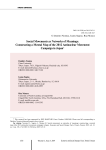
Статья научная
Social movement is a battlefield of meanings; a movement campaign contains a cluster of diverse meanings given by those participating in the campaign. Stimulated by such theoretical concepts as “network of meanings”, scholars have attempted to seize the collective meaning attribution process and resultant meaning clusters, as well as central/dominant and peripheral meanings in social movement campaigns. However, such a meaning cluster in the actual movement campaign has never been captured to date. This paper is an attempt to draw what we call “mental map,” mapping a cluster of meanings the movement campaign accommodates. Employing network analysis technique, we draw a network graph showing a cluster of meanings present in the movement campaign. We used the 2012 anti-nuclear movement campaign in Japan as a research site where we collected empirical data. The analysis of the 2012 network graph clearly showed central meanings considered to dominate the signification process of the 2012 campaign and a cluster of meanings that constituted a subset in the entire web of meanings. To ensure the capability of our research technique to differentiate meaning clusters from one movement campaign to another, we compared the 2012 campaign against the 1954 campaign. The differences were stark: the 2012 campaign was strongly driven by motherhood mentality to protect children and a concern over local environments, while the 1954 campaign dominantly drew its signification from collective memory of Hiroshima and Nagasaki and risk on food safety. The mental map approach can help us understand “why” of the movement campaign from yet another perspective; it can also assist us in understanding the change in the mentality and meaning attribution processes of social movements, as, given the data exist, it can be applied to the past campaigns.
Бесплатно
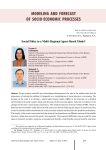
Social policy in a multi-regional agent-based model
Статья научная
In the modern scientific and technological development, the role of the welfare state and the importance of solving the problem of inequality as a manifestation of social injustice is increasing. The purpose of the work is to develop a spatial agent-based model (ABM) in the direction of a detailed representation of social transfers block and the study of the economic agents’ behavior in response to the changes of the state’s social policy parameters. The isoelastic function of social welfare (FSW), which is based on the households’ utility functions with correction factors reflecting the degree of social insecurity, is used to include ethical considerations in the economic analysis and formalize the goals for social justice. The novelty of the work is associated with the study of the dependence on different variants of the benefits structure, taking into account the agents’ heterogeneity. The proposed ABM takes into account five main types of monetary transfers: pensions, unemployment benefits, child benefits, poverty benefits, and other social transfers. In addition, the experimental calculations consider two additional social benefits: the proportional transfer and basic income. The experimental calculations results show that social benefits are quite successfully integrated into the original ABM, and the main effects of these benefits are fully manifested in it. The relative characteristics of individual benefits differ significantly from the point of view of certain concepts of social justice and the corresponding changes in the FSW. By the example of the ratio of child benefit to the poverty benefit, it is shown that the effect in terms of the FSW at high levels of inequality rejection is achieved only through the complex use of transfers.
Бесплатно
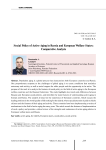
Social policy of active aging in Russia and European welfare states: comparative analysis
Статья научная
Population aging is a global process that characterizes both European countries and Russia. One proportionate response to the challenges of global aging is to create conditions that maximize autonomy and activity, as well as social support for older people and the opportunity to be active. The purpose of the work is to analyze the features of social policy in the field of active aging in the European welfare countries and the Russian Federation. The study highlights key trends and differences between Russian and European social policies, and identifies the main features of understanding active aging in Europe and Russia. The analysis is based on the experience of European countries, which occupy the leading positions in the world quality of life ranking for the elderly, where special attention is paid to elderly citizens and the features of their aging and activity. These countries have been implementing a variety of mechanisms in the field of active aging for many years. The article reveals the features of implementation of such a policy and provides a critical review of the strengths and weaknesses of active aging policies in European welfare states and Russia.
Бесплатно
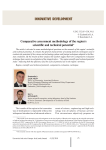
Статья научная
The present-day Russia is characterized by the decline in population size and its health impairment. The author considers that it is possible to overcome this negative trend and lowering human capital when the poverty being decreasing and the population inequality in income and pay being overcoming.
Бесплатно
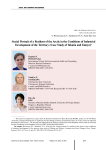
Статья научная
The way of life of the indigenous and incoming population of the Arctic zone of the Russian Federation requires a detailed study, since it is in these areas that the exploration and extraction of minerals for the purpose of territorial industrial development has been actively carried out in recent decades. The article reveals the social portrait of residents of Russia's Arctic regions, who are immediate participants in the changes taking place in the territories of their residence and associated with the implementation of large-scale mining projects. We conducted the empirical part of the study in 2017-2020 in the Republic of Sakha (Yakutia), where placer gold and diamonds are currently explored and mined, and in the Taimyr Dolgano-Nenets Municipal District of Krasnoyarsk Krai. The object of the study was the economic behavior of local residents of the Arctic regions; the subject was their attitude toward the activities of mining companies. As a result of a sociological survey in the form of questionnaires (cluster sample, 859 people, age selection from 18 years and older), informal conversations with local residents, we gave their socio-demographic characteristics, presented their attitude toward traditional trades and crafts and toward the industrial development of Russia's Arctic regions. The practical significance of the study consists in analyzing modern characteristics of an Arctic resident; this analysis can be of use to various stakeholders involved in the implementation of state programs for the development of Russia's Arctic territories. The study of the problems and needs of indigenous peoples of the Arctic zone of Russia allows avoiding resource conflicts between state structures, industrial companies and the local population.
Бесплатно
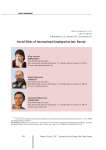
Social risks of international immigration into Russia
Статья научная
The article explains the sociological theory of immigration risks. Despite the fact that domestic sociology has been recently attracting more attention to the risk theory, risks of migration processes have not yet been properly considered. According to the authors, such a theory must consider social risks for all participants of the migration process: host countries, countries of origin and immigrants. The typological model of immigration risks is based on the theory of integration by H. Esser and F. Heckmann. The model describes how various risks are manifested at the micro, meso and macro level of social reality taking into account the four dimensions of social integration: cultural, structural, interactional and identification. Based on the theoretical model the authors identify several groups of risks for the host population: risks based on local and migrant population interaction at the micro level and perceived risks which can be formed by the media under the influence of certain political forces at the macro level...
Бесплатно
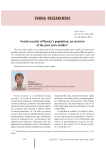
Social security of Russia's population: an overview of the past years studies
Статья научная
The aim of the article is to evaluate the level of social protection and to define the most acute problems and risks (threats), undermining the feeling of social security in the people of Russian regions. It is determined, that the population feels less protected due to the onset of poverty, crime and environmental threat. According to the analysis results, the type of society existing in the regions can be defined as unsatisfactory for the social activity of an individual, since the population is poorly protected from external objective risks and threats.
Бесплатно

Social vulnerability of families with children in modern Russia
Статья научная
When performing its reproductive function, the family - the main institution for population reproduction - continues to bear increased risks of poverty. The goal of our paper is to study manifestations of social vulnerability of modern Russian families with children. Despite the active demographic policy implemented with the help of national projects since 2006, the actual situation concerning families with children has not undergone any significant changes. The birth of a child continues to reduce the standard of living to the point of crossing the poverty line; the housing market remains inaccessible, and the tools for combining parenthood and professional activities do not work. The resources of an average family do not promote the formation of human potential of the child population that would meet the demands of the knowledge economy and are reduced to a set of primary needs. The existing mechanisms of social support do not guarantee that the life of families with children will actually improve; childcare allowances are not growing and are not focused on achieving any standard of living, even the minimum subsistence level. Having few children becomes a conscious choice against the background of the crisis of marriage, which ceased to serve as a kind of contract according to which the husband is a breadwinner, and the wife gives birth to children and runs the house. Women have become full-fledged actors in the labor market. However, they still face discrimination in this regard. The analysis of gender statistics shows that women who have the same level of education, sphere of activity and official status as men receive an average wage that is one third lower compared to that of men. However, the phenomenon of working wives is not only and not so much a reflection of their desire for professional self-realization. Two working adults in an average family will provide a per capita income at the subsistence level in case they have no more than two children. In addition, satisfaction with the availability and quality of education and health services - the institutions that support the reproduction of the population and human potential - remains far from the desired level. Under the circumstances, the family with children remains one of the most socially vulnerable population groups; this fact requires the revision of the mechanisms of social policy and the principles of the social state in general. Scientific novelty of our study consists in the fact that it analyzes and classifies the manifestations of social vulnerability of modern families with children and puts forward the proposals to improve the social and demographic policy of the state. The findings of our research can be used in the practice of public administration.
Бесплатно
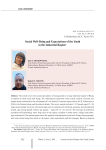
Social well-being and expectations of the youth in the industrial region
Статья научная
The article covers the social expectations of young people in a large industrial region of Russia in relation to their social well-being. The information framework of the article consists of results of a sample study conducted by the sociologists of Ural Federal University supervised by Yu.R. Vishnevsky in 2016 in the Yekaterinburg and Sverdlovsk oblasts. The survey sample includes 2,512 people aged 15-30, target quota sample was used, with quota signs such as employment (working, studying, and unemployed youth), age (young people of three age groups - under 20, 21-25, and 26-30) and type of settlement (residents of Ekaterinburg, other large cities in the region, medium or small towns, villages and urban-type settlements). The present paper raises the problem of studying the social well-being of young people, with a key factor being their focus on the future, their expectations and life strategies. Based on analysis of scientific concepts devoted to the population’s social well-being, an important feature of the youth as a socio-demographic group is revealed: their focus on the future and a vast planning horizon...
Бесплатно

Social well-being of the Belarusian youth: a sociological analysis
Статья научная
The article considers the concept «social wellbeing» from the point of view of the theory and a technique of its sociological studying. Results of empirical research of social state of health of the Belarusyouth in comparison with other age groups are given. Conclusions concerning the social wellbeing of modern youth in the conditions of world financial and economic crisis are made.
Бесплатно
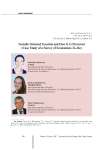
Socially oriented taxation and how it is perceived (case study of a survey of economists-to-be)
Статья научная
The article discusses the prospects for adapting unconventional tax mechanisms to tax administration in a secular multicultural state. The purpose of the study is to identify significant factors which determine the advisability of establishing socially oriented taxes as perceived by economists-to-be that do not possess enough information about alternative tax practices and mechanisms for their implementation. Scientific novelty of the research consists in the fact that it considers socially-oriented taxation in more detail; this type of taxation is suggested to be considered in conjunction with religious tax practices, which significantly complements existing ideas about the specifics of functioning of modern tax systems. The research methodology includes the use of the questionnaire method. The respondents are future economists - students of Saint Petersburg State University. At the first stage, we test the level of awareness of respondents about alternative tax practices...
Бесплатно
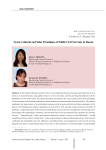
Socio-cultural and value paradigms of public civil servants in Russia
Статья научная
In the modern Russian society, there is a contradiction between the goals and objectives of civil service, its social relevance and applied nature, on the one hand, and the growing dissatisfaction of the population on the other hand. The article describes and analyzes the socio-cultural and value paradigms of civil servants in the Russian Federation, which define the characteristics of their activities. The authors emphasize the importance of a motivational resource such as socio-cultural and value paradigms in the process of reforming the modern institution of civil service. The research results revealed a number of problems. A significant part of the structure of life goals of civil servants is occupied by material interests; according to the respondents’ estimates, the activities they do are not related to the categories of “favorite activity”, “interesting job”. Some government employees consider “service to the Fatherland”, “useful contribution to the society and the state” as the main purpose for their professional activity...
Бесплатно

Socio-cultural characteristics of the modern youth: some results of the pilot study
Статья научная
The research into the problems of development of the youth as a specific social group that has special needs in socio-cultural terms attracts researchers' attention in different branches of science (psychology, pedagogy, economy, sociology, etc.). This interest is caused by the fact that the youth stage (especially early youth) involves formation of special world perception, understanding of socio-legal, political and cultural events in the state, which becomes a basis for the development of a full-scale picture of the world at the later stages of maturation. The understanding of the mechanisms for initiating young people to socio-cultural values is an important aspect of the strategic plans elaboration in order to developthe country and the region. The article is devoted to the study of social and cultural characteristics of young generation in the foreign and domestic science. It shows that each stage of the youth problems study has been characterized by different research methods and tools. The image of the youth in modern Russia also has a number of features, presented in the article. The socio-cultural values of young people in the senior school age are identified in the “pilot” survey with the elements of formal interviews conducted among children attending the Research-and-Educational Center at ISEDT RAS. The article discloses further prospects of this research.
Бесплатно
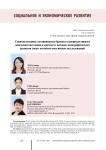
Статья научная
The growth of the quality of human potential is an important component of the “great rejuvenation of the Chinese nation” (Chinese dream) and a key goal of Russia’s socio-economic development, and birth rate is a fundamental factor affecting the long-term demographic trends of both countries. In a report at the XX National Congress of the Communist Party of China, it was proposed to “optimize the population development strategy, create a policy system to support family planning and reduce family costs for childbearing, upbringing and education of children; these areas are highlighted as the main postulates in the concept of building a “Healthy China”. In Russia, the importance of preserving people, caring for the family, and strengthening traditional values is also recognized at the highest level. Support for the family, motherhood and childhood, and an increase in birth rate are defined in the National Security Strategy of the Russian Federation. Presidential Decree 809, dated November 9, 2022, approved the key staples of Russian culture, including the family with children based on love and marriage. The aim of the work is to substantiate the need to strengthen the information and educational component of demographic policy regulating marital and family relations. We conducted a study using the methods of literature review, analysis of statistical data on the demographic development of provinces of Central China and federal districts of the Russian Federation, and also using the results of questionnaire surveys of Jiangxi Province and Vologda Oblast population. It was revealed that birth rate is low in almost all macro-regions of China and Russia; the number of women of reproductive age is decreasing; reproductive behavior is characterized by a focus on childlessness, marital behavior is characterized by postponement of marriage, blurring of social norms (traditions) of marriage. The decrease in birth rate occurs against the background of population aging, ensuring a further increase in the proportion of older people. The formation of a new “culture of marriage and childbearing” is a long-term project that will contribute to changing marital behavior and will require promoting family planning policy and strengthening state support in this area, forming a harmonious and friendly social environment, promoting ideas of strong marriage and childbearing.
Бесплатно

Статья научная
The article summarizes theoretical views on the essence of socio-cultural factors in economic growth. We single out their components (mental attitudes, morality, cultural traditions, professional recognition), which, when used effectively, promote the growth of work performance efficiency. We also consider theoretical and methodological approaches to the category of “professional calling”, define its essence and features (such as deep commitment to the chosen field of work, high responsibility and dedication in the profession, selflessness and creative attitude to the work, spiritual connection of man with the profession, positive mental attitude in the work). The aim of the research is to evaluate the impact of professional calling as a social and cultural phenomenon on the economic performance of work (for example, wages, efficiency and quality of work, motivation to work, etc.) that are directly linked to labor productivity as the basis for material reproduction and productivity of the economy...
Бесплатно
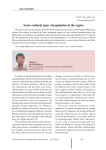
Socio-cultural types of population in the region
Статья научная
The article presents an analysis of ISEDT RAS social study carried out in the Vologda Oblast that allowed the authors to identify the most important aspects of socio-cultural modernization: the differentiation of behavior, psychological traits of individuals and social self-identification. It is shown that the population of the region, involved in the transformation, is in the process of socio-cultural division into groups that have dissimilar behavioral characteristics; a new system of interests and value relation to the current changes is formed in different social strata.
Бесплатно
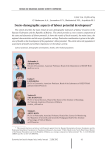
Socio-demographic aspects of labour potential development
Статья научная
The article describes the main trends of socio-demographic indicators of labour resources in the Russian Federation and the Republic of Belarus. The article provides a cross-country comparison of the state and dynamics of labour potential; it shows the results of local research, the main issues, the regional characteristics and the ways of problem-solving. Particular consideration is given to the influ- ence of health on the development of the population’s labor potential. The article shows the population’s assessment of health and wellness importance in the labour activity.
Бесплатно

